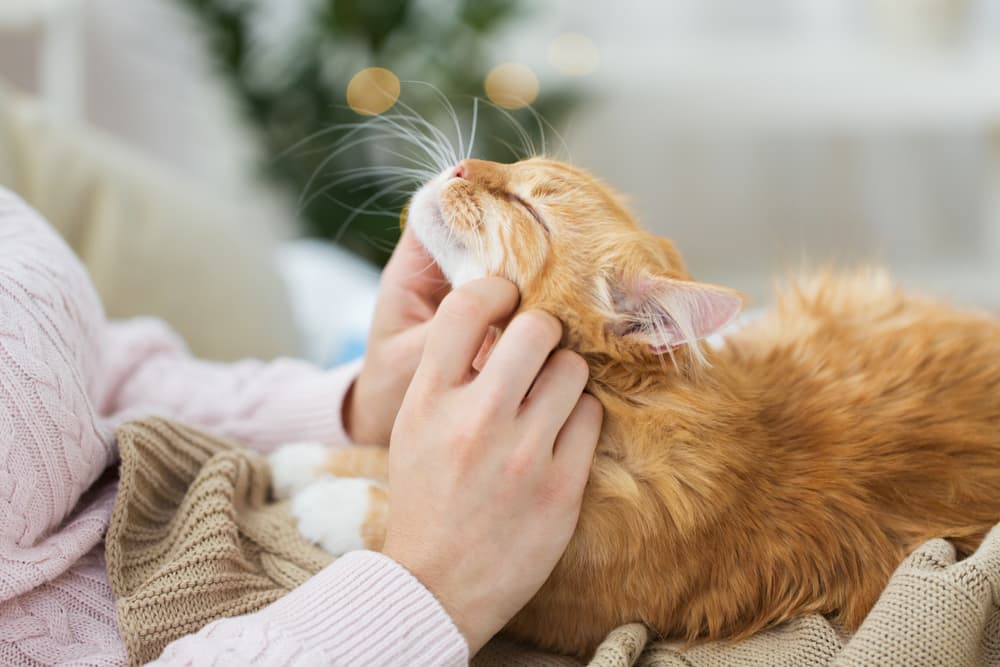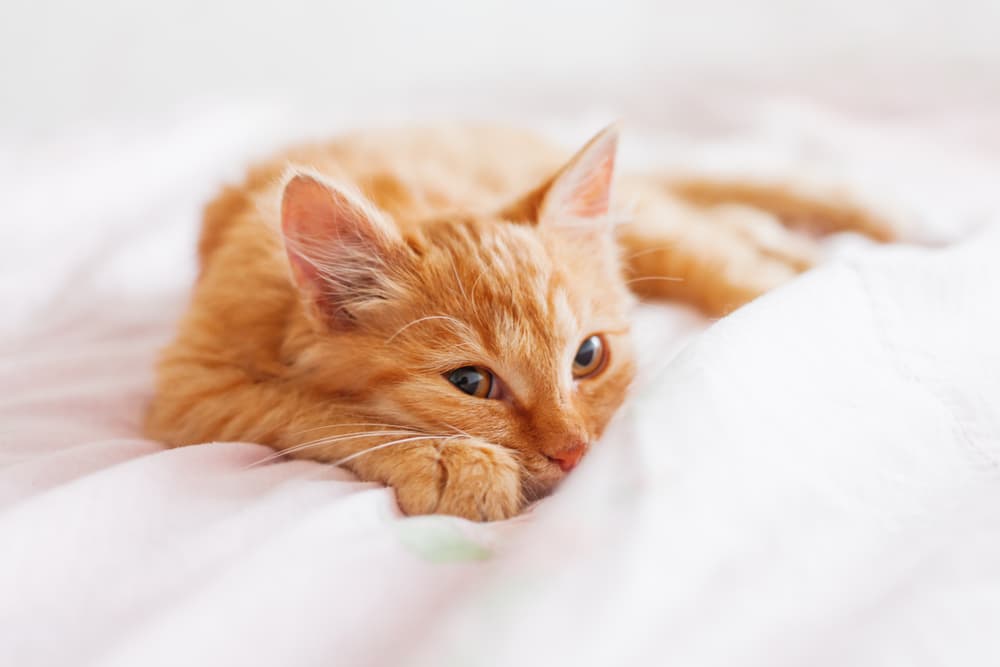Why Does My Cat Sleep on Me?

Cats and their sleeping positions give plenty of food for thought (and entertainment). They might be sprawled out, hiding under a piece of furniture, or even twitching amidst a dream.
After all, cats average between 15-20 hours of sleep a day. Some of them spend part of that time sleeping in closets, on windowsills, and behind laundry baskets.
However, some cats enjoy sleeping on your chest, between your legs, or even on (or near) your head. While some people don’t mind this closeness, others would appreciate a bit more space. And some cat parents are simply perplexed and amused by these seemingly odd sleeping choices.
“There’s a lot we don’t know about cats,” says Dr. Laura M. Holland of Circle of Life Veterinary Clinic in New Britain, Pennsylvania. “It’s a complicated question of why they want to sleep with or on us.”
If you’re wondering why your kitty chooses your chest, head, or legs as prime sleeping zones, read on. Additionally, if their sleeping habits are interrupting your sleep, then you’ll find ideas for retraining below.
Why Do Cats Lay on You?

If you imagine kittens sleeping together, then it may make sense that cats like cuddling. “When cats are born, they pile together. Think of a basket of kittens,” says cat behaviorist, Dr. Marci Koski of Feline Behavior Solutions in Vancouver, Washington. “They’re warm and secure and the scent is there. It’s natural they’d seek out their family members to sleep with.”
Laying on you also provides cats with a sense of security. As predators, there’s a natural sense of safety to sleep near others in their family for protection. “When they’re asleep, they’re vulnerable. They want to sleep in a safe area. So, what could be safer than sleeping between their human person’s legs?” says Koski. “Plus, the bed smells like you. Smells are important to cats. It helps them feel secure.”
Koski also explains that cats sleep on humans because they want to get warm. She says that it comes down to a cat’s thermoneutral zone, which is a temperature range where the body doesn’t need to expend energy to heat or cool itself. In humans, the thermoneutral zone ranges between 64-72 degrees but for cats it’s 86-100 degrees.
“Cats really like heat,” she says. “At night, they seek out the warmest spots, so they’ll often seek their human companions.”
Is This a Sign of Affection?

Holland looks at cats sleeping with you as a bonding signal. “If you let your cat sleep with you it’s a bond. We’re part of their colony,” she says.
Since it’s not uncommon for cats to sleep on one another, they’re simply treating you as one of their own. “If you have a loving relationship with your cat, they’re going to come to you for pets and to snuggle,” says Koski. “It’s a rewarding behavior.”
But what about snuggling up on top of your head, against your face, or on your chest? Is your cat trying to tell you something when sleeping in these positions?
Favorite Cat Sleeping Positions

“Cats always sleep in the same position,” says Holland. “Some sleep on their backs with their feet in the air. Some curl up. Some cover their faces.”
Cats tend to curl up in the following spots:
- Between your legs
- On your chest
- On your head
- Right next to you in bed
While experts don’t know exactly why these cat sleeping positions and spots are popular, Holland thinks it ties back to cats wanting warmth. When you think about it, cats tend to gravitate towards warm spots. Napping in the summer sun, curling up next to the fireplace in winter, or lounging on a pile of clean laundry are all warm spots where cat parents often find their pets snoozing.
While your cat may find warmth and comfort from sleeping on or next to you, this behavior could interrupt your own sleep patterns. If that’s the case, read on for some tips on how to fix the problem.
How to Get Your Space Back

It is possible to reclaim your bed and even your bedroom if you don’t want your cats interrupting your sleep. It just takes some retraining.
Koski says to set up a nice, warm spot and reward your cat for using it. She suggests a heated cat bed with a blanket that smells like you or that has your cat’s own scent on it. “Praise and pet them when they snuggle down into it,” she says. “That way, you’re reinforcing the behavior.”
You can also help your cat calm down for bedtime by recognizing that cats are naturally active at dawn and dusk. Koski explains that if you give your cat a good workout for 15-20 minutes prior to bed followed by a small snack, they’ll be more inclined to wind down for the night.
If you’re having difficulty with your kitty sleeping on your head, chest, or otherwise disturbing your rest, try talking with your veterinarian or a cat behaviorist for guidance. Every cat is different, but with the right training techniques you can both get back to a restful night’s sleep in no time.









